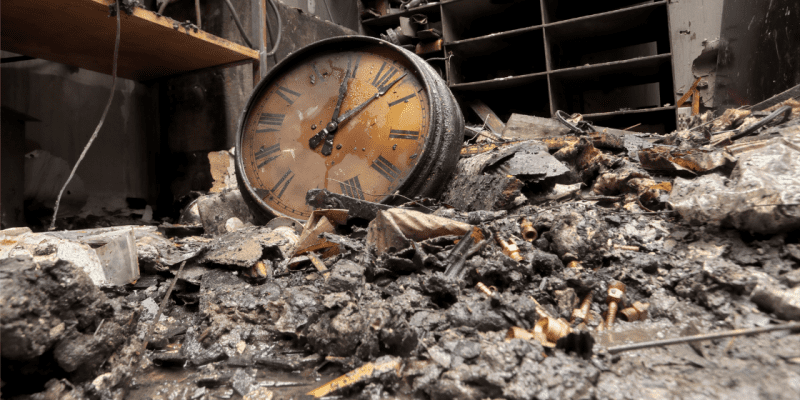It doesn’t seem that dangerous. It’s just the byproduct of a fire… maybe from a chimney, a furnace puff-back, even an over-zealous gas grill. When the fire is out, you should be able to clean up the soot residue easily, right?
Not so fast! Soot has some characteristics that everyone should consider before attempting to clean. Those who perform fire
damage work understand the dangers of soot. So do emergency personnel like firemen. In fact, outdoor soot is regulated by the EPA, classified as a criteria pollutant.
Consider these facts about soot.
Soot is made up of very fine carbon particles that become airborne and can remain airborne for quite some time. You must consider this if any type of fire occurs. When it is in your breathing space, it can end up in your lungs. You may not realize it is happening, but it is, and it can cause damage to your mouth, nose, throat and, of course, where it ends up… in your lungs. And did you know that “harmless” wood smoke has many chemical similarities to cigarette smoke?
Skin contact can be dangerous. The International Agency for Research on Cancer says the specific type of hydrocarbons in soot are classified as a “known human carcinogen.” So if you do attempt any cleaning, remember that simple contact, not even breathing in residues, can be potentially harmful to you. Ventilation of affected spaces is required.
Wearing appropriate personal protective equipment is a must for the professionals, and so it should be for you if you do any of the work yourself. Qualified respiratory, skin and eye protection should be purchased.
So when you do have the unthinkable happen, such as from a fire, furnace puff-back or other source that produces soot, think carefully before proceeding.
It’s best to leave the tough work to your disaster restoration pros at Regency DRT!
The Dangers of Soot

